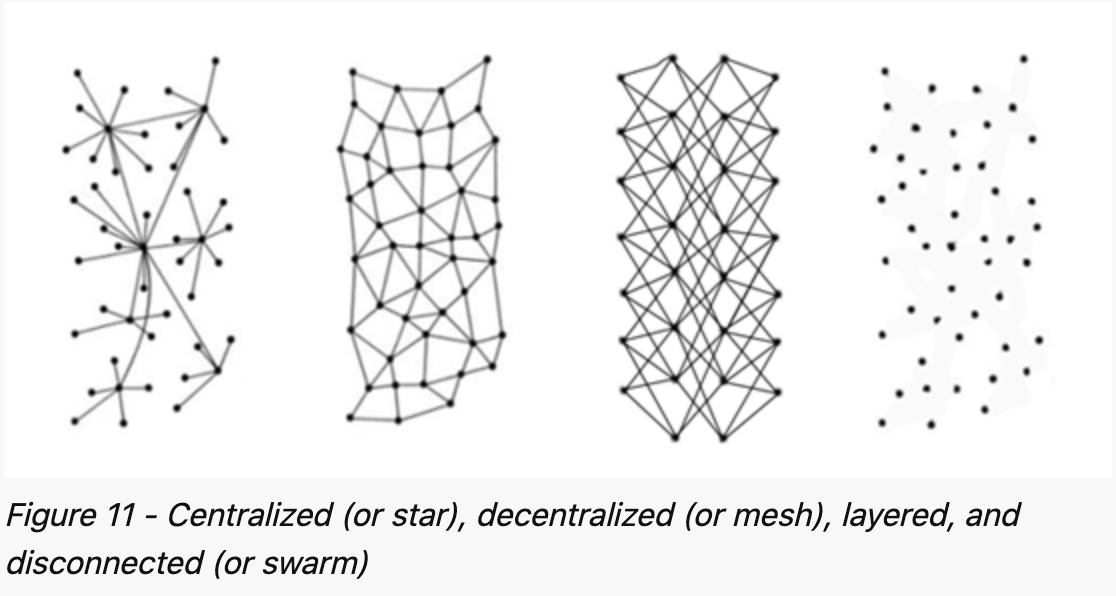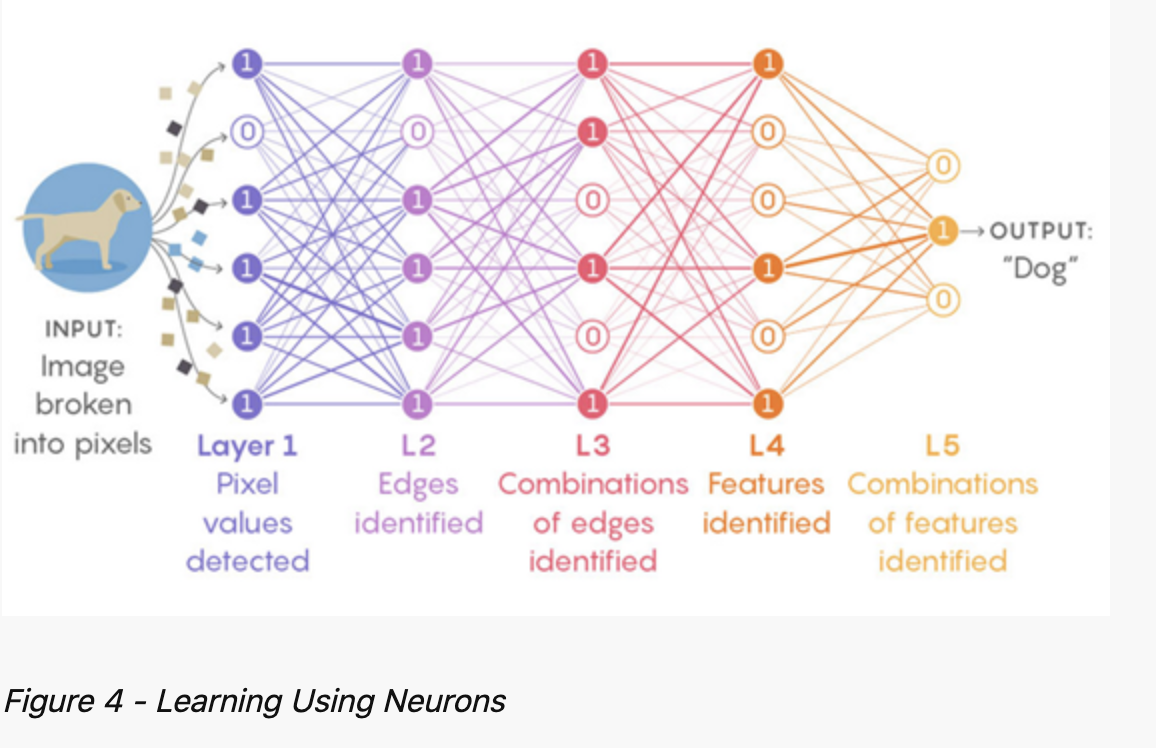
Downes, S. (2022) Connectivism, Half an Hour, 9 February
Stephen Downes has just published an article in his blog that:
presents an overview of connectivism, offering a connectivist account of learning and a detailed analysis of how learning occurs in networks. It then offers readers an interpretation of connectivism, that is, a set of mechanisms for talking about and implementing connectivism in learning networks, and finally, pedagogy.
[A version in Chinese is being published in Distance Education in China. However at the time of writing my post, the web site for the journal was blocked.]
Downes’ article is about 17,000 words long and, while clearly written, I found it a difficult read, because I found myself wanting to challenge or consider deeply almost every sentence in the article. For this reason, I will not attempt to interpret it, but I will do two posts on it.
This post will be mainly descriptive and will merely outline very briefly the topics covered in Downes’ article. I will not attempt to explain the theory. Stephen does this himself in the article. I hope my brief overview though will give you enough information to want to read carefully the article yourself, because I believe it is an important contribution to theory in education, without necessarily my endorsing it. So my second post will be my review of the article or more specifically his theory of connectivism.
Introduction
Connectivism is offered as a response, not to digitalization, but to the paucity of contemporary theory in education….connectivism does not offer itself as an alternative ‘learning theory’ or ‘lens’ with which to interpret phenomena in the process of doing the same sort of instructional activities teachers and researchers have always done. It instead offers an empirical basis for an understanding of teaching and learning, redefining how we think of knowledge, how learning occurs, what we are trying to do when we learn, and how learning is delivered and assessed.
What is connectivism?
What is learning?
knowledge is distributed across a network of connections, and therefore that learning consists of the ability to construct and traverse those networks.
A connectivist account of learning
a connection exists between two entities when a change of state in one entity can cause or result in a change of state in the second entity. Learning is a thing that networks do, it’s a thing that all networks do, and arguably a thing that only networks do.
Self-organization
How does ‘connection’ as described above become something we would recognize as learning? independent things…. that are connected can by virtue of that connection alone become organized or synchronized themselves without needing any other intervention…. It doesn’t need direction, you don’t need to organize the synchronization
The Siemen’s model of connectivism
George would say it is that neural networks and social networks form one big network, that our knowledge consists of all the connections inside our mind and the way this is connected to everything else that’s in the world, and the way it’s connected with itself.
I say personal learning (neural network) is one network and social learning (social network) is another network, and they’re two separate networks, but that they interact with each other through the process of perception.
Connectivism as distinguished from other learning theories
Downes claims a series of differences between connectivism and other learning theories. In short, Connectivism to me is a non-representational theory. That makes it quite different from other theories. What I mean by that is there’s no real concept of transferring knowledge, making knowledge, or building knowledge. Rather learning and knowing are descriptions of physical processes that happen in our brains…..We’re working with a physical system, the human body, composed of physical properties, and in particular, a neural net that grows and develops based on the experiences it has, in the activities, and results of those activities it undertakes.
How does learning occur?
Other learning theories talk about the activities that are set up and organized by an instructor or a teacher rather than what learning is like from the perspective of the individual. Downes argues that learning is actually neuronal activity, receiving and interpreting signals, interaction and structures. There is no ‘intentionality’ in this process.

Learning theories
we can describe the factors that govern the formation and strength of connections between neurons; these, more properly than descriptions of pedagogical practices, may be understood as ‘learning theories.’ Downes then proposes four learning theories based on types of connectivity: Hebbian; contiguity; back propagation; Bolzmann. [These are drawn from neuroscience and artificial intelligence theory.]
Properties of networks
What makes these artificial neural networks work (in AI)? The answer is arguably trial and error…..What is important here is to understand that there are many types of networks formed from many types of neurons. When we talk about how networks learn, what we want to talk about is how networks acquire the properties they do: how neurons grow and develop, how they connect to each other, and how network topologies take shape….how perception and experience shape and develop the connectivity of the neural network, how we ‘grow’, in other words, our knowledge.
How networks learn
neural networks have a huge capacity to receive and transmit and reorganize and grow, to produce interesting and relevant phenomena, to see something and respond….what we more properly think of as ‘learning’ in neural networks is how perception and experience shape and develop the connectivity of the neural network, how we ‘grow’, in other words, our knowledge.
Interpreting connectivism
Network theory can be found in the world in many ways. In mathematics, we encounter graph theory. In computer science, we find connectionism, artificial neural networks, and artificial intelligence. In biology, there are theories of ecology and ecosystems. In sociology, we have social network analysis and actor network theory. In physiology, there are accounts of perception and neuroscience.
One example given by Downes is the murmuration of a flock of starlings.
one of the advantages of a network way of looking at the world is….[that] if the same logic underlies different domains, then a discovery in one domain can lead to insights in another domain. Thus, if we learn something about how networks behave by studying computer networks, this may lead us to insights about human neural networks.
A theory for the digital age
There are two familiar types of knowledge: qualitative knowledge based on properties such as the shape of something, the color of something, or the size of something; and quantitative knowledge, which may be based on the mass or weight of something, the volume or size of something, or the quantity or number of things….Connectivism argues that there is a third kind of knowledge, which is connective knowledge, which is based on organization and structure…..Knowledge of, or about, or derived from, the flock [of starlings] is over and above the knowledge of any individual starling….To know something is to be organized in a certain way, to learn is to acquire patterns, to learn is to have experienced something frequently enough to form a characteristic response to that thing. Knowledge, in other words, is recognition.
With digital technology, both in the form of connectionist artificial neural networks, and in the form of a world wide communications network, it has become possible to design and built large scale networks and observe how they function directly, and to suggest mechanisms based, not on a theory of the unconscious, but on common network design principles.
Network design principles
Downes then sets out seven design principles for ‘effective’networks:
- decentralization
- distribution
- disintermediation
- disaggregation
- disintegration
- democratization
- dynamization
Desegregation and the semantic principle
These are further elaborations on the properties of networks
Connectivism as pedagogy
This is the section most likely to be of interest to readers of this blog.
in connectivism, knowledge is not understood as the content that is transferred from person to person, but rather, as the network that is grown and developed from interactions with other entities in the network and in the world generally. Hence the objective of teaching is to stimulate such interactions, which is achieved by modeling and demonstrating the relevant sort of activity. The actual growth of the network is achieved entirely by the individual through practice and a mechanism that enables a refinement of that network because of that practice. The outcome of a connectivist learning activity is a type of knowledge as recognition of relevant phenomena, where recognition may include relevant responses to those phenomena.
connectivist pedagogy may be described in terms of ARRFF method, where ARRFF stands for aggregating, remixing, repurpose, and feed forward. This pattern is not unique to connectivism and can be found in many other sources. It combines the idea of gathering things together, remixing them, adopting them to your own purpose, translating to your own language, and then sharing. What makes ARRFF unique in connectivism is that it was developed from the perspective of, “what does a neuron do?” It asks, if you were a single entity in a network, what are you doing?
connectivism is based on the core skill of seeing connections between information sources and making decisions, even in rapidly changing environments, based on the capacity to recognize things, to be able to continually update and change our knowledge based on new phenomena that are presented.
Examples of connectivism in action in education
Downes gives two examples of how connectivism can be interpreted and applied in education:
cMOOCs
Literacy/expertise
Concluding remarks
Connectivism is focused on a wider understanding of learning and an understanding of learning that’s based not just on facts and information, but rather a person’s capacity to live, work, and thrive within a wider interconnected community. I’ve said before, you look for the success of learning not in task scores and grades or even graduations, you look for success in learning in social indices, like lower crime rates, better health, greater happiness among the people. These are to me the proper measurements, the proper indicators of learning, and the proper ways to evaluate a learning theory.
My comment
I have omitted most of the examples that are used to explain elements of the theory. If you are at all interested, or even critical on the basis of my summary, please go to the original article, in fairness to Stephen. My aim here is to bring attention to Stephen’s latest thinking on connectivism.









 Dr. Tony Bates is the author of eleven books in the field of online learning and distance education. He has provided consulting services specializing in training in the planning and management of online learning and distance education, working with over 40 organizations in 25 countries. Tony is a Research Associate with Contact North | Contact Nord, Ontario’s Distance Education & Training Network.
Dr. Tony Bates is the author of eleven books in the field of online learning and distance education. He has provided consulting services specializing in training in the planning and management of online learning and distance education, working with over 40 organizations in 25 countries. Tony is a Research Associate with Contact North | Contact Nord, Ontario’s Distance Education & Training Network.

